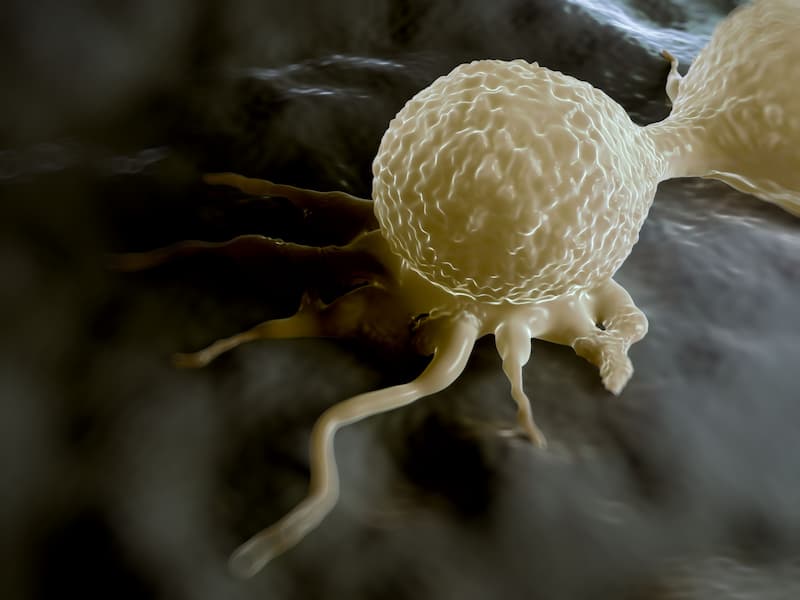Real-World Data Support SLNB Omission in HR+ HER2– Breast Cancer
Oncologic outcomes from a real-world analysis appear to be comparable with those observed in the sentinel lymph node biopsy arm of the SOUND trial.
"Nodal status did not appear to impact adjuvant systemic therapy considerations in SOUND-eligible [patients who are] postmenopausal with a recurrence score of less than or equal to 25,” according to lead study author Andreas Giannakou, MD.

Real-world findings support carefully omitting surgical staging of the axilla in patients who are postmenopausal with hormone receptor (HR)–positive, HER2-negative breast cancer meeting the eligibility criteria for the phase 3 SOUND trial (NCT02167490), according to results presented at the 25th American Society of Breast Surgeons Annual Meeting.1
Regarding nodal burden, 87.8% of patients in a real-world setting who met eligibility criteria for the SOUND trial had 0 positive sentinel lymph nodes (SLNs) compared with 84.6% of those enrolled on the sentinel lymph node biopsy (SLNB) arm of the SOUND trial. Additionally, axillary lymph node dissection (ALND) was performed in 2.6% and 6.4% of patients in each respective population. Four or more positive LNs were reported in 0.9% and 0.6% of patients, respectively.
In the SOUND-eligible population and the SLNB cohort of the SOUND trial, respectively, common adjuvant systemic therapy options included hormone therapy alone (80.1% vs 77.5%), chemotherapy only (2.9% vs 6.9%), and hormone therapy in combination with chemotherapy (6.7% vs 13.1%). Additionally, locoregional recurrence affected 1.3% and 1.7% of patients, respectively, and distant metastasis was reported in 0.3% and 1.8%.
Of 199 patients who were postmenopausal in the SOUND-eligible cohort, 1% (n = 2) had at least 4 positive nodes. Both patients had a recurrence score of at least 25, and chemotherapy was not recommended for either patient.
“Although our follow-up is limited, oncologic outcomes are excellent and similar [to those observed in] the SOUND trial. Nodal status did not appear to impact adjuvant systemic therapy considerations in SOUND-eligible [patients who are] postmenopausal with a recurrence score of less than or equal to 25,” lead study author Andreas Giannakou, MD, a breast surgical fellow at Brigham and Women’s Hospital, Massachusetts General Hospital, and Dana-Farber Cancer Institute, said in a press briefing on these findings.
In the SOUND trial, 1463 patients with cT1N0 breast cancer and negative axillary ultrasound (AxUS) were assigned to receive SLNB or no axillary surgical staging.2 The 5-year rate of distant disease-free survival (DDFS) was 97.7% vs 98% in each respective arm, demonstrating the noninferiority of omitting axillary staging compared with SLNB. According to Giannakou, practices still consider nodal status as an important factor for making decisions related to adjuvant systemic therapy for postmenopausal populations with HER2-positive and triple-negative disease.
Investigators of this analysis aimed to assess the generalizability of SOUND trial outcomes in a real-world setting by evaluating nodal disease burden and oncologic outcomes among patients with HR-positive, and HER2-negative breast cancer who would have met the eligibility criteria for the trial. Those with cT1N0 HR-positive, HER2-negative disease who received treatment between 2016 and 2023 and had a negative preoperative AxUS for breast conservation were eligible for the SOUND trial and thereby included in the analysis.
As part of the analysis, investigators compared patient and tumor characteristics between patients with and without preoperative AxUS as well as clinicopathologic and treatment characteristics between the SOUND-eligible population and patients enrolled on the SLNB arm of the SOUND trial. Determining how node status and 21-gene recurrence score affected chemotherapy recommendations for patients who are postmenopausal in the SOUND-eligible group was another outcome.
Of 3972 patients with cT1N0M0 HR-positive, HER2-negative disease, 3428 had no AxUS compared with 544 who did. After ruling out patients who had abnormal LNs on AxUS or upfront mastectomy, investigators identified 408 patients who were eligible for the SOUND trial, including 312 with SLNB.
In those with AxUS with or without SLNB compared with those without AxUS with or without SLNB, respectively, the median follow-up was 23.6 months and 29.9 months. At 3 years in each respective group, the locoregional recurrence rate was 0.0% vs 0.03% (P = .52), the distant recurrence rate was 1.0% vs 0.03% (P = .43), the invasive disease-free survival rate was 98.0% vs 98.5% (P = .54), and the overall survival rate was 98.9% vs 98.9% (P = .86).
Compared with those without AxUS, patients who had AxUS had a higher likelihood of being younger (P <.001) and premenopausal (P <.001). Additionally, those without AxUS were more likely to have a larger tumor size (P <.001), a higher tumor grade (P <.001), and a mastectomy (P <.001).
The median patient age was 57 years (IQR, 48-64) in the SOUND-eligible population and 60 years (IQR, 52-68) in the SLNB arm of the SOUND trial. Additionally, most patients in each respective group had ductal histology (69.2% vs 77.8%), grade 2 disease (50.6% vs 53.2%), lumpectomy as final surgery (98.7% vs 99.3%), and radiotherapy (87.2% vs 98.0%).
References
- Giannakou A, Kantor O, Un Park K, et al. Real world implications of the SOUND trial. Presented at: 25th Annual American Society of Breast Cancer Surgeons Meeting; April 10-14, 2024; Orlando, FL.
- Gentilini OD, Botteri E, Sangalli C, et al. Sentinel lymph node biopsy vs no axillary surgery in patients with small breast cancer and negative results on ultrasonography of axillary lymph nodes: The SOUND randomized clinical trial. JAMA Oncol. 2023;9(11):1557-1564. doi: 10.1001/jamaoncol.2023.3759.